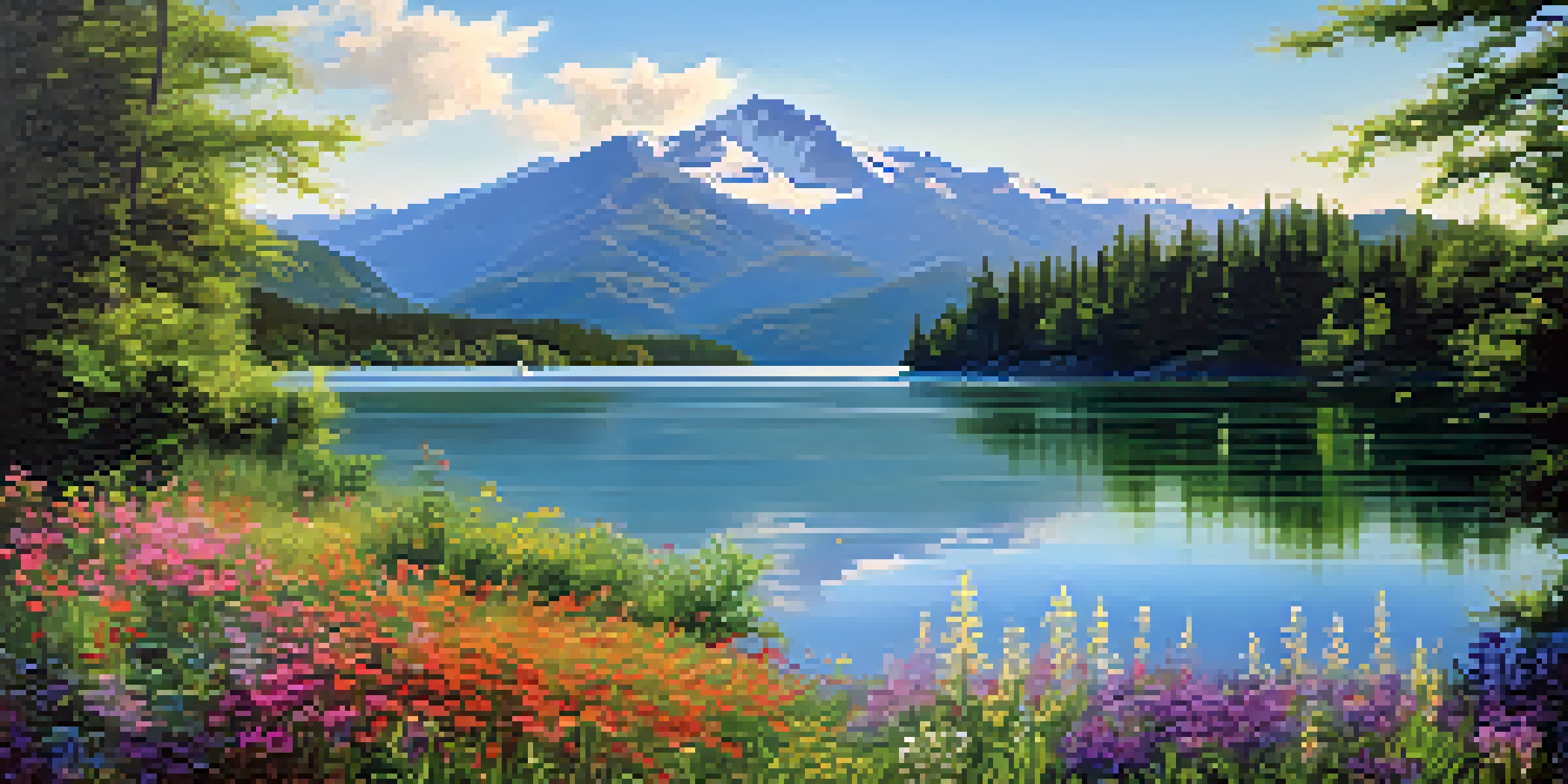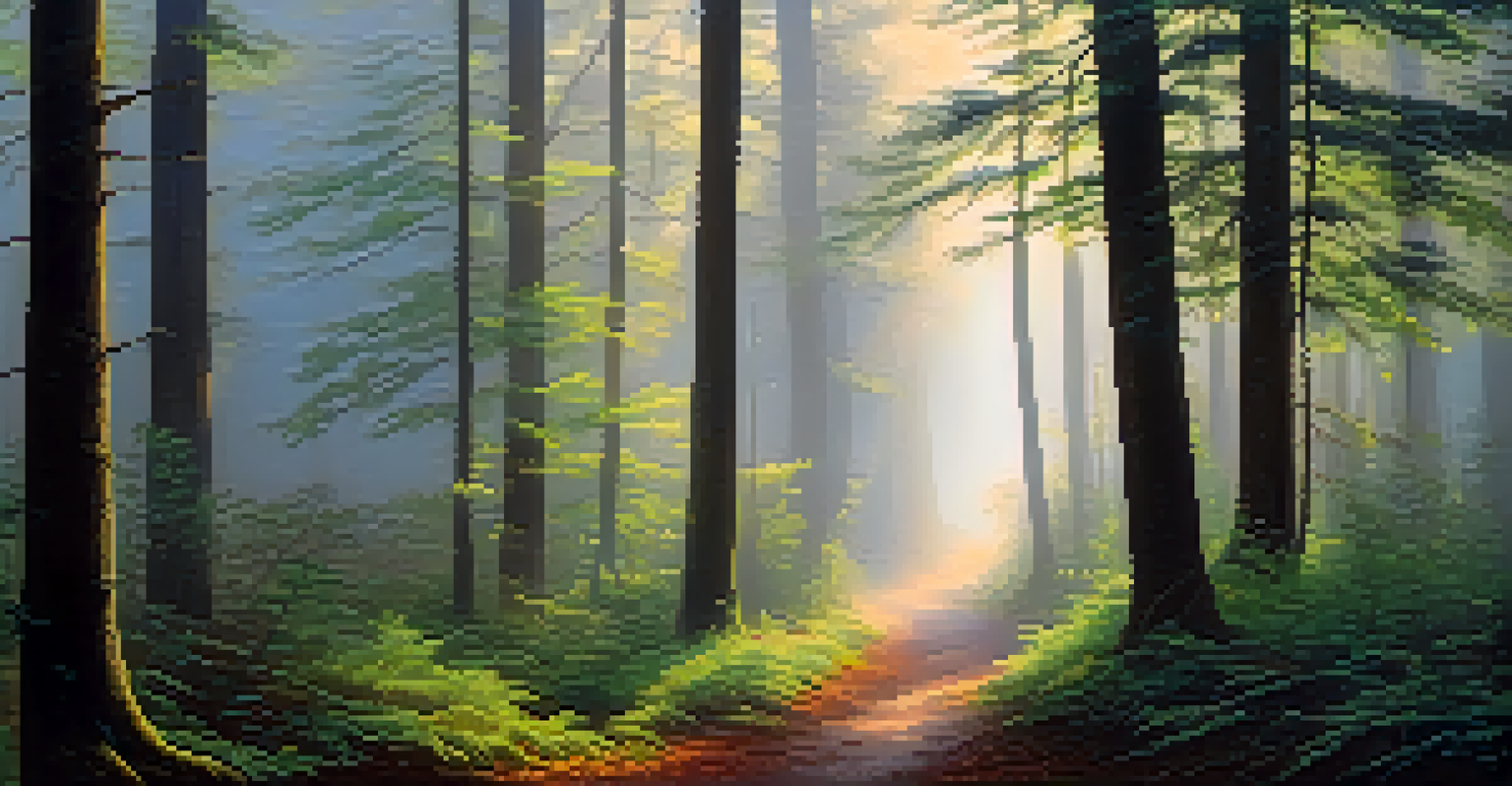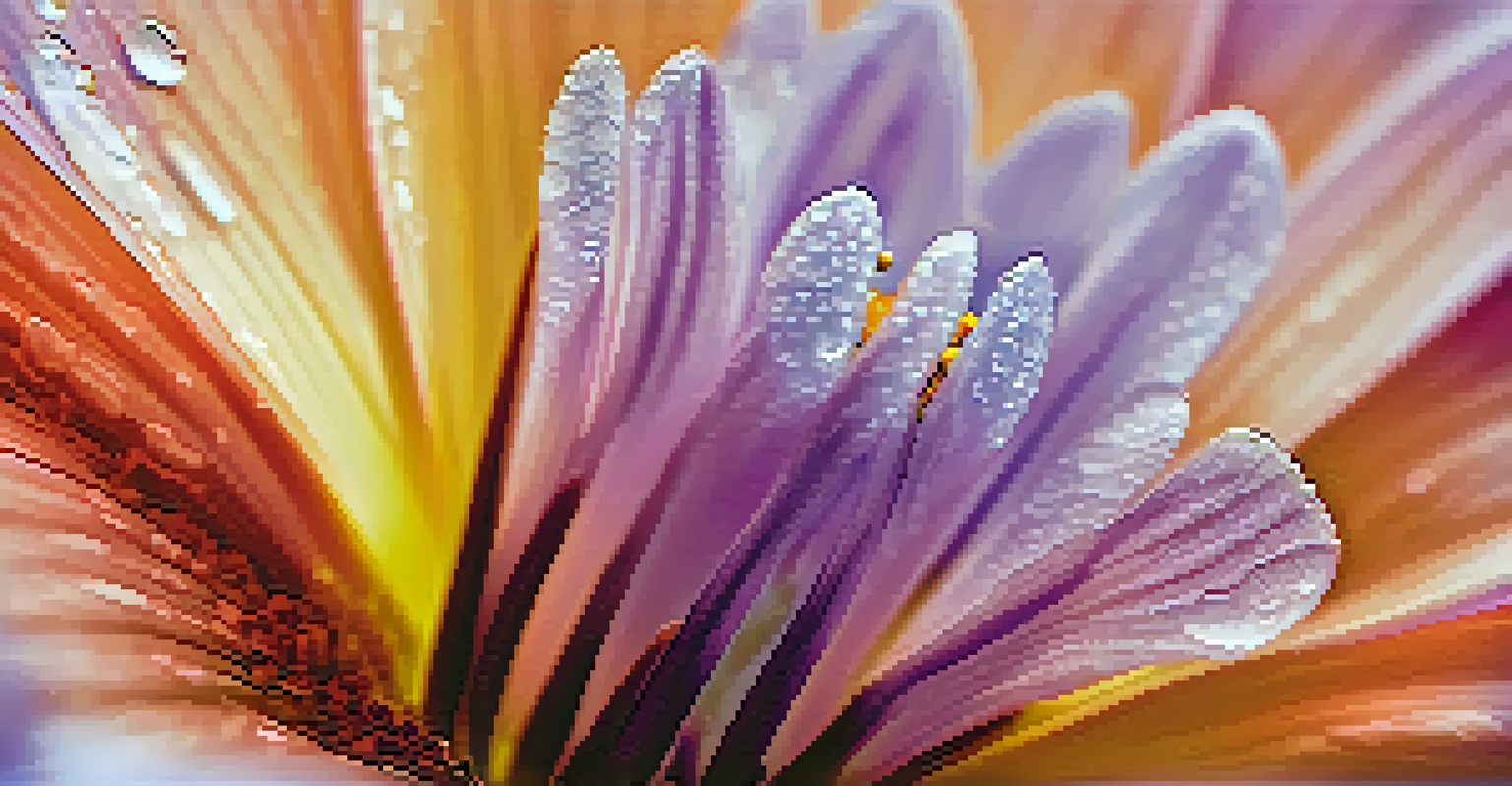Nature and Spirituality: Reflections in Poetry

The Essence of Nature in Poetry
Nature has long been a source of inspiration for poets throughout history. From the rustling of leaves to the grandeur of mountains, these elements evoke deep emotions and reflections. Poets often use nature as a canvas to express their thoughts, allowing readers to connect with the beauty around them.
In every walk with nature one receives far more than he seeks.
For example, William Wordsworth famously celebrated the beauty of the Lake District in his works, encouraging us to appreciate the simple joys of nature. His poetry invites readers to step outside and find solace in the natural world, making it a vital part of his spiritual exploration. Through vivid imagery, he encapsulates the essence of nature and its impact on the human spirit.
This connection between nature and human emotion is powerful; it can evoke feelings of tranquility, wonder, and even introspection. As we read these poems, we are reminded of our own experiences in nature and how they can lead to profound spiritual moments.
Spirituality Reflected in Poetic Language
Poetry often serves as a bridge to explore spirituality, enabling poets to convey their beliefs and experiences. Through carefully chosen words and metaphors, they delve into the mysteries of existence, seeking to understand their place in the universe. This exploration can often mirror the themes found in nature, creating a rich tapestry of interconnected ideas.

Take Rainer Maria Rilke, for instance. His poetry frequently reflects on the divine and the human experience, using nature as a backdrop for his spiritual inquiries. His works remind us that moments of clarity and enlightenment can be found in the simplest aspects of our surroundings, such as a quiet forest or a flowing river.
Nature Inspires Poetic Expression
Poets have long drawn inspiration from nature, using it as a canvas to convey emotions and connect readers with the beauty of the natural world.
By intertwining spirituality with nature, poets invite us to ponder life's bigger questions. This relationship encourages readers to seek their own spiritual paths, often leading them to moments of reflection and deeper understanding.
Imagery: A Gateway to Spiritual Experiences
Imagery is a powerful tool in poetry, serving as a gateway to spiritual experiences. When poets paint vivid pictures with words, they transport readers to another realm, one where they can feel the essence of nature and its spiritual significance. This sensory connection enhances the reader's ability to engage with the poem on a deeper level.
The poetry of the earth is never dead.
Consider the work of John Keats, whose use of lush imagery brings nature to life in his poems. His descriptions of flowers, the sky, and the changing seasons evoke a sense of wonder that resonates with spiritual themes. This ability to create immersive experiences allows readers to feel a connection to both nature and their own spirituality.
Ultimately, the imagery in poetry serves as a reminder of the beauty and complexity of life. It encourages us to pause and reflect on our surroundings, fostering a greater appreciation for the world and our place within it.
The Role of Nature in Shaping Spiritual Beliefs
Nature plays a crucial role in shaping our spiritual beliefs and practices. Many cultures and religions emphasize the importance of nature, viewing it as a manifestation of the divine. This connection is often explored in poetry, where the natural world becomes a symbol of faith and understanding.
For instance, Native American poetry frequently highlights the sacredness of the land and its elements. The deep respect for nature found in these works reflects a spiritual belief that everything is interconnected. Through poetry, readers can grasp the essence of these beliefs and the profound relationship between humanity and nature.
Spirituality and Nature Intertwined
Many poets explore the relationship between spirituality and nature, inviting readers to reflect on their own beliefs and experiences in the natural world.
As we engage with such poetry, we are encouraged to reflect on our own beliefs. Nature's influence on our spirituality can lead to a deeper appreciation for the world around us and our role in it.
Finding Solace in Nature Through Poetry
Many people turn to poetry as a source of solace, especially when seeking comfort in nature. The act of reading or writing poetry can be therapeutic, allowing individuals to process their emotions and find peace within themselves. Nature serves as a backdrop for these reflections, creating a serene environment for healing.
Consider the works of Mary Oliver, whose poetry often emphasizes the healing power of nature. Her vivid descriptions invite readers to immerse themselves in the beauty of the natural world, fostering a sense of calm and introspection. This connection can be especially potent for those facing personal challenges or seeking spiritual renewal.
By exploring these themes, poets remind us of the restorative qualities of nature. Engaging with poetry can help us find solace during difficult times, reinforcing the belief that nature and spirituality are intertwined.
The Legacy of Nature and Spirituality in Modern Poetry
As we move into the contemporary era, the themes of nature and spirituality continue to resonate in modern poetry. Today's poets carry forward the tradition of using natural imagery to explore spiritual concepts. This legacy reflects an ongoing appreciation for both nature and the human experience.
For instance, poets like Mary Ruefle and Ocean Vuong incorporate elements of nature in their work, exploring how these themes influence their understanding of identity and existence. Their poetry demonstrates that the connection between nature and spirituality remains relevant, inviting readers to reflect on their own journeys.
Imagery as a Path to Reflection
Vivid imagery in poetry serves as a powerful tool for creating immersive experiences that foster deeper connections to both nature and spirituality.
Through modern poetry, we can see how the relationship between nature and spirituality evolves. This ongoing dialogue encourages us to remain attuned to the world around us and to seek meaning in our experiences.
The Invitation to Reflect on Nature and Spirituality
Ultimately, poetry invites us to reflect on the profound connection between nature and spirituality. It encourages us to look beyond the surface and find deeper meaning in our surroundings. By engaging with the works of poets who celebrate these themes, we can embark on our own spiritual journeys.
As we read, we are challenged to consider how our experiences in nature shape our beliefs and understanding of the world. Whether through the beauty of a sunset or the stillness of a forest, these moments can lead to profound insights.

Embracing the intersection of nature and spirituality in poetry can enrich our lives. It reminds us that, in our busy lives, there is always time to pause, reflect, and connect with the world around us.